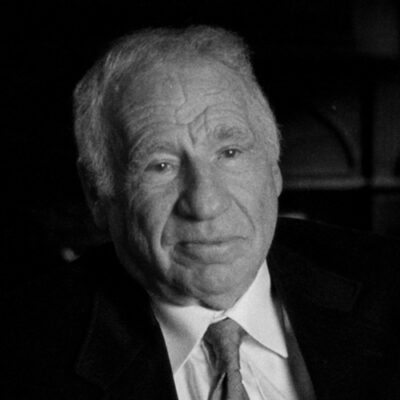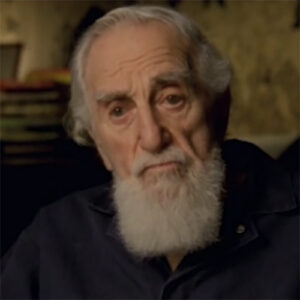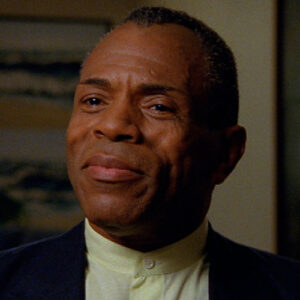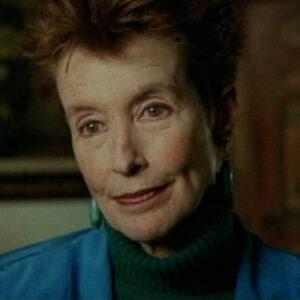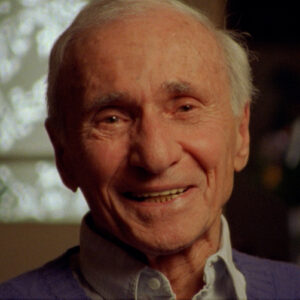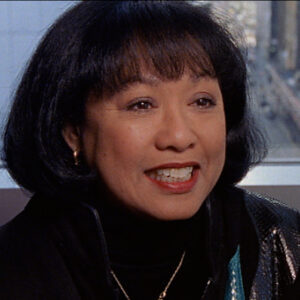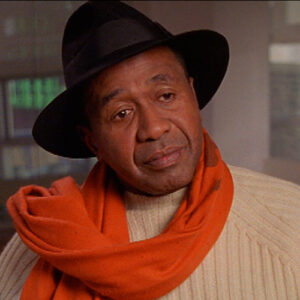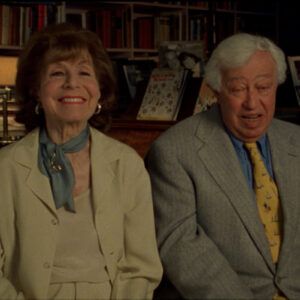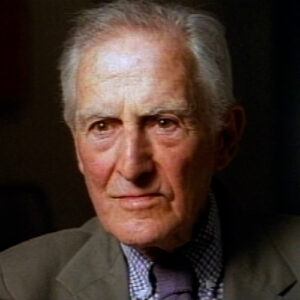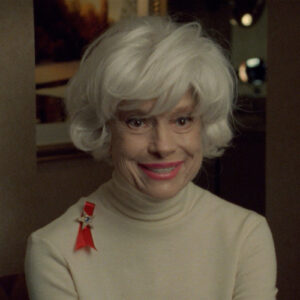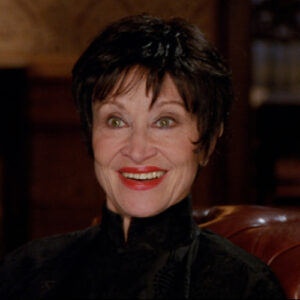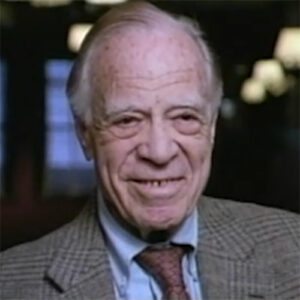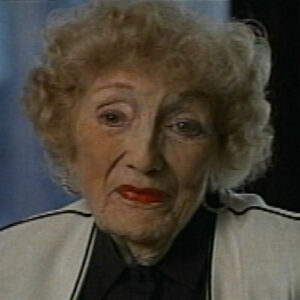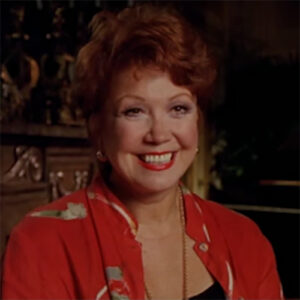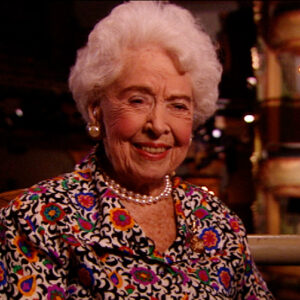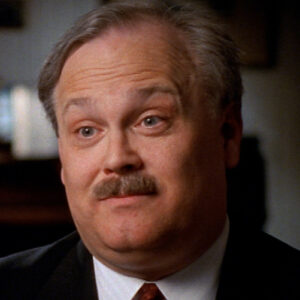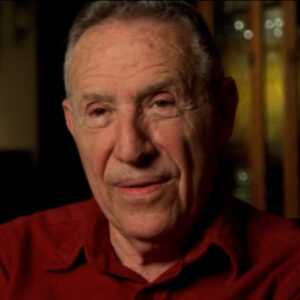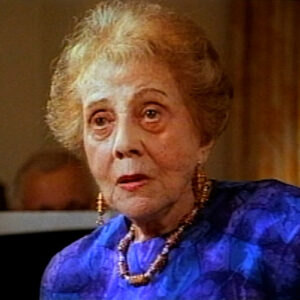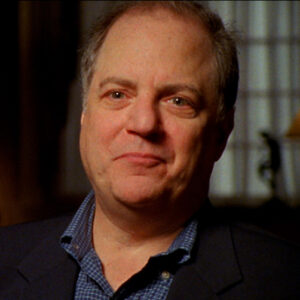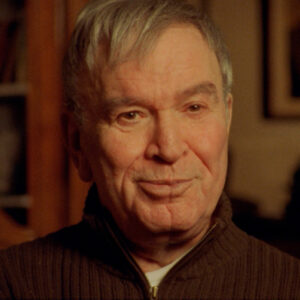Michael Kantor: So, let’s just pick up right there, which is, you know, it’s talking about shuffle along. Why is it such an important show? Part of it is, these kind of black shows have disappeared for a while, but in a bigger picture, as I think Langston Hughes pointed out, it kicks off a huge era. So, the question again is, why would shuffle along such an importance show?
Robert Kimball: It’s arguably one of the most important musicals in the history of the American musical theater. In some ways, it’s important to showboat in Oklahoma and for many reasons, some musical, some cultural, some literary because of its relationship to the Harlem Renaissance, but we have to look at what the theater was like in 1921. There was only one performer on the stage who was an African American and he was Burt Williams. He was the only one. He worked in the Ziegfeld Follies, and he died in 1922. During the period from about 1909, 10, in the early 20s, essentially black artistry was not present on Broadway at all, certainly in the musical stage. And what happened is that before that, the decade before, beginning around the turn of the century, there was a very rich tradition of performance practice. You had the Williams and Walker Company, Bert Williams and George Walker, the great team. You had Bob Cole and the Johnson Brothers, Jay Rosamond and James Weldon, who was one of the founders of the NAACP, and they wrote scores together. They were like operettas, like the Red Moon and the Shoofly Regiment, and Williams and Walker did in Dahomey and other shows. And there was also Ernest Hogan, who is famous for all Coon’s look-alike. He had a troupe as well. And these guys were doing great, and they were getting their shows on Broadway. And very suddenly, three of the major participants died from illness. Bob Cole, George Walker, and Ernest Hogan. And when that happened, these companies essentially folded. They couldn’t sustain themselves. And the artistry disappeared from Broadway for a long time. So what happened, World War I was very pivotal because at least overseas. Some of the African Americans were not integrated totally, but at least partially so, with whites in the war effort, particularly with the French Army. The noble Sissel and James Reese Europe went over with the 369th, and they were absorbed not by the Americans, but by the French, and they performed, and they wrote songs, and the sent them back to New York where noble Sisels new partner, UB Blake was running the James Reese Europe office. And they wrote some wonderful, wonderful songs during the World War I period, like Miranda and On Patrol and No Man’s Land, which are really incredibly vivid, and became part of Cecil and Blake’s vaudeville act. At the same time, Miller and Lyles, F.E. Miller and Aubrey Lyles were a vaudevil team. And they became very famous later for writing the Amos and Andy material on radio, which became like the top radio show of its day. And Miller and Lyles and Cicelyne Blake were separate vaudeville acts. And when James Reese Europe tragically died at the awful, awful, horrible tragedy in Boston in 1919, he had already told the guys that they should work together. He said, you guys could create musical theater and bring it back to Broadway. And they got together at a benefit, I think in 1920, and Miller& Lyles had a sketch called The Mayor of Jim Town. And that sketch became the basis for Shuffle Along. And so Cicelyne Blake wrote the score, Miller and Lyles did the book, and the comedy sketches. It’s not a review, as a lot of people think. There were different shuffle-alongs, but they’re all book shows, and that’s important for people to realize. So when the show came out, it brought a lot very special things. First of all, it gave a lot of incredibly talented artists the chance to perform. Among the artists who we know today who performed in shuffle-a-long, Paul Robeson, the great singer, was member of the Four Harmony Kings for a while. Josephine Baker made her debut. She was the comedy chorus girl, and of course her career is legendary. Florence Mills was considered the greatest of the African-American performers, at least by her colleagues, and she died so tragically in 1927. Among many people, Adelaide Hall, fabulous artist who went on to a great career and sang the famous vocalese for the Creole Love Call with Duke Ellington and introduced songs in the Cotton Club with Harold Arlen’s work and so forth. There are so many artists who are there. At any rate, this show led to other shows. It was fabulously successful. It ran for over 500 performances, which at that time was a tremendously long run. It led to others writers and performers given a chance to perform and to do their work. And so we had run wild. And in running wild, Elizabeth Welch introduced the Charleston, James P. Johnson and Cecil Mack song, Like T for Two is one of the theme songs of the entire decade, and that was in Run and Wild, which was 1923. That was Miller and Lyles without Cicelynn Blake. Cicelyn Blake did the Chocolate Dandies, and Fats Waller, again, working, and he did Connie’s Hot Chocolates with Andy Razoff. And they were great teams, and they were great writers, and were given a chance to perform. And so it never, after that, black artistry was never absent from Broadway. So that is extremely important.
Michael Kantor: Just give me one topic to work in there, which is sort of shuffle along, kick open a door or something leading the way, to make sure we have that topic sent.
Robert Kimball: Well, I think you could say that Shuffle Along basically opened a door for everybody who followed, all the African-American artists, creative and performing. They had their chance after Shuffle along. Shuffle long said, we can do it again. It’s possible for us to be there too, and to have a chance. Now, if you look at it musically, many, many people were influenced by Shuffle. Irving Berlin said he went back to see it many times. There’s no question that the Gershwins were influenced by it. If you look at a song like Baltimore Buzz, which occurs late in Shuffle Along, that syncopation, which is unbelievable, is unlike anything that had been heard in the American musical theater before. And then you hear, a couple of years later, fascinating rhythm from the Gerschwins. And you see that George Gershun, who studied with Lucky Roberts, who was a colleague of James P. Johnson’s, and he learned style from them and understood that world. Very very well that Gershwin as Berlin had done with lyrics with with everybody’s staff and others were bringing syncopation into the mainstream of musical theater and it wasn’t that black artists weren’t given a chance they were but now Berlin and Gershon who were great talents obviously to begin with were able to incorporate these elements and so this was a salient contribution to the American musical theater. And it came out of ragtime It came out of the piano music that had been featured along the eastern seaboard in the Carolinas, performances of great pieces by James P. Johnson and others like the Carolina Shout and others. This was the music that was heard in the city. This is very different than the music heard in New Orleans and Chicago, and this music really informed this work. And UB Blake was, as we know now, the last survivor of that whole era because he lived to be 100 years old. And he was able to show people what that world was like. Basically, if there were costumes around, they used them. Oriental blues, they had some Oriental costumes, and so they wrote the song. It was common in those days. If you had flower sets and flowers, you did flower songs and reviews. And bandana days has to be looked at very carefully. You think about it, you say, what are they saying here? Well, it is irony. It’s not an all-out Uncle Tom kind of song. Telling you about this world, and yet you know that they’re also winking at it. There’s another song in Shuffle Along which a lot of people didn’t want to hear, and in recent years even, called If You’ve Never Been Vamped by a Brown Skin, You’ve never been vamped at all. Ubi Blake was doing his recording for John Hammond in the late 60s. John said, Ubi, you don’t want to do that number. And he said, yes, I do, John. It’s part of our history. And it was important for all of that, even the Uncle Tom songs and the old sketches, which are Amos and Andy-like routines, to be preserved. Because that’s what it was. But it wasn’t all these people shuffling and just said it, bowing down to the white establishment. They were making the same kind of ironic minstrel comments that minstral see is all about. The black artist is. Teasing the whites, teasing the blacks, teasing the whites. It goes on and on back and forth. And it’s always been that way. They learned from each other. And Ubi said, you know, why can’t I write a waltz? Everybody said it. When I wrote Harry, I’m Just Wild About Harry, which was the hit song of the show and became the campaign song for Harry Truman, he said it was originally a walthz. And he said, You can’t have a walsz in a colored show. And so I had to make it into something very different. The song we know today is not a waltz.
Michael Kantor: You know, you talk about blackface, and we somehow can accept Burt Williams being shackled by his mask or in this show, but speak about Jolson in a certain sense. You see this guy, you see him in blackface and it’s sort of, is there another side to it? Is there any way for us to accept it now, beyond simply, oh, that was history? You know, is there another side that… I guess what prompted this was that Jolson, according to your book anyway, had real friendship with Cicelyne Blake. And when they got into trouble in Hartford, he’s trying to bail them out and so on. And that, you know, that we look at blackface and then we go, oh, how horrible, how, you now.
Robert Kimball: It was, it is to us, and it was a mask, a performing mask. You know, it was if they put on a costume of some kind to perform. And they adopted, you know, black artistry essentially as their mask, Jolson, Cantor and the rest, right, Tinney? And it’s very hard for us today to look at that without saying, wow, what is this? How can this be? Even then, it probably was difficult. But it was a tradition, and it had to do with minstrel shows. It came out of the minstral tradition, and that’s what they were. They came out, the end men came out. Tambo and Bones and that whole thing was the minestrel show. And so even though the Jewish cantorial style of Al Jolson, which of course is what it is, he’s out of The Synagogue, it is still related to the minrestrial tradition. And so it’s coming out of it. It’s the tail end of it, And it shows, as things happen in operetta as well, that that form could no longer sustain that type of performing style. Just wasn’t possible.
Michael Kantor: George White. Yes. He hires dancers after Shuffle One. He wants to bring that kind of dance. Speak to who George White was and how, in a way, he champions dance in a way that Gershwin’s and others are doing things in the…
Robert Kimball: Good question. George White was one of the great review men. He followed Ziegfeld. The Ziegfelder Follies had begun in 1907, and they ran, a little interrupted occasionally, into 1931. That was the last year of the Follys. And Earl Carroll specialized in getting beauty contest winners. He’d go to Asbury Park at the Miss Asbury Park winner, Miss East Orange, New Jersey, Miss South Ozone Heights. And he’d put them in the choruses of his shows. George White really, because he himself was a dancer, he respected terrific dancers and he got a lot of wonderful dancers. And he hired an incredibly gifted young composer very early on in the series named George Gershwin. And George Gerschwin really learned his craft, writing for the George White Scandals. And he did it from 1920 to 1924.
Michael Kantor: So is there some make the link if you would between like he’s right he’s learning his crap, but it’s it’s It’s he’s writing for dance a very energetic the new kind of music jance
Robert Kimball: Yes, Gershwin is of course writing many different kinds of songs when he’s working for George White. I mean, again, he would write, if there was a Spanish setting and he wrote Rose of Madrid, radio came out and he would wrote a radio song. And if there were a new game like Mahjong, he wrote a Mahjongs song. That’s the way it was. But he wrote all the dance steps as well. But the song. I think of all the ones he wrote for the scandals that most characterizes this involvement of dancing that George White really emphasized is I’ll Build a Stairway to Paradise, which had Paul Whiteman’s band on stage, 1922 scandals, and just a terrific, big, fabulous production number, and everybody really went to town on that, and that is an example of a kind of number. Now, George White knew Shuffle Along, he knew all those shows. He said, look, if the black girls can do this, the colored girls can this, we’re going to get them to teach the white girls how to do this kind of jazz dancing. And by God, they did. And by 1926, with the De Silva, Brown, and Henderson score, you get the black bottom, and you get other great dance numbers. And so George White was very astute at bringing off. He had fantastic songwriters. He had De Silva Brown and Henderson. And they wrote great songs for him, as George Gershwin did.
Michael Kantor: Just want to grab a topic sentence. You went through Earl Carroll and the others. Just give us something about the 20s in a way was.
Robert Kimball: A review?
Michael Kantor: Thank you very much, André. 250. Which other review? Yeah, it featured so many different kinds of reviews.
Robert Kimball: No, sure, I’d be happy to do that. Well, the quintessential show of the 1920s was the review, the big review, the review of Ziegfeld, of George White, of Earl Carroll, the Schubert’s, the passing shows of the Schuberts, the Great Temptations, Knicksnacks of 1926, Texas Guinans, Padlocks. We could go on and on with all Harry Delmar’s revels. These were the titles of some of the musical reviews of that period. What they were, were a representation of the sort of pluralism of American life. They captured a little bit of everything. If you look at a quintessential Follies in the early years of that decade, you get you have Will Rogers coming out of the middle of America, sort of twitting the cities and in joshing all the big time politicians. You have Fanny Brice coming out of the ghetto, out of The Tenements, you know, who’s bringing the Yiddish tradition into Broadway. And you’re still at the very end of his life, Bert Williams, the sad, broken African American who hasn’t got the money to pay his rent. And, you now, the great song he did earlier called Nobody. You know, you just feel the pain. All of this was in the same show. These great talents were there together. Ziegfeld might not have cared about them. Richard Rogers once told me, you know, he said, Ziegfield, he had a tin ear. Couldn’t hear a note of music, didn’t know anything about music, but look at what he gave the world, even with that ignorance.
Michael Kantor: And Sting was inked out, he also brought together, talking about the composers, Herbert, Berlin, I mean, you have the same kind of spectrum in the music with the tinny.
Robert Kimball: They all worked for Ziegfeld, all the great writers, and they all struggled to get paid. The Gershwins nearly sued him, and everybody didn’t get paid by Ziegfeld. I mean, Irving Caesar had wonderful letters from Irving Cesar and his correspondence, pleading with Ziegfel to pay him for work on what became the Follies of 26, which wasn’t named that because it had so many lawsuits connected with it. But there are great stories about Ziegfield. A wonderful story I heard about him recently is He was in very poor shape in 1932, the last year of his life. He did the revival of Showboat. He did a show called Hot Shaw with Burt Lahr and Lupi Velázquez, which was set in Mexico, as they said, late in Mexico to try to entertain the audience with that little phrase. But he was suffering what we today would call Alzheimer’s. And he was at the Warwick Hotel on West 54th Street and he didn’t have a dollar to pay for his hotel. The hotel was at that time owned by William Randolph Hurst in the name of Marion Davies. Marion had been in the Follies. She loved Ziegfeld. He had helped launch her career as a performer. She heard he was in the hotel, that he was ill, he had no money, and she said, send the bills to me. Don’t let him try to pay for anything. And that’s what happened. And he spent many of his last weeks right across the street from where the Ziegfel Theater was, and now no longer exists. Staying at the Warwick and being supported by Marion Davies and William Randolph Hearst.
Michael Kantor: What does Broadway have to do with jazz in this important era?
Robert Kimball: Broadway is the center of the entertainment world, and anything that came out of American culture got to Broadway at one time or other. Ragtime certainly did, and around 1917, jazz is sort of emerging out of ragtime, and it too becomes a part of Broadway. You hear it in the songs, and you begin to get a sense that the whole jazz age, as we know it, is linked with Broadway. When you think of George Gershwin, for example, you think the Gershun shows, George and Ira’s shows, you think of images like Coney Island hot dog stands, you know, lights coming on in the twilight, and you think of tap dancing chorus girls. You just think of it inevitably. The rhythms of the Gerschwin shows are jazz-like. Rhapsody in Blue, which was his, you know passport to fame in 1924, same year as he writes Fascinating Rhythm. And the man I love, are all part of that world. And he becomes a hero of the jazz age. And I’ve said that I think George and Ira Gershwin are really the minstrels of the Jazz Age. They are the musical laureates of the Jazz Age, they define it musically. And their colleagues who came with them, the younger colleagues like Rogers and others, absorbed it as well. And gave us a tremendously rich, exciting time in the theater. You know, in 1927, you have 250 shows opening, 50 of the musicals. And you have over 20 million people going to the theater, probably more than double what we have today. And you’ll have 70, 75 theaters open. We have, what, 30 today. And you will have, in 1920, in late 27, In one week of 20 shows opening in one week, 11 on one night, 11 shows open on one day. First of all, that would be prohibited today. We can’t have more than one show open on a night. It’s just not allowed anymore. The League of Theaters would say no. But in those days, what did they do with the newspapers? Well, they went to the racing riders, they went the old bit riders. Whoever they could find had to review a show that night. It was a different time. And it was just as. Jolson’s jazz singer is emerging in the fall of 27. So it’s all changing and Showboat is coming. And this is why it’s such an exciting time because you had not only incredible abundance, but fantastic variety as well. Opportunities galore for all these writers.
Michael Kantor: Paint that moment where things change. Just, Jolson does jazz singer, and very soon thereafter the economy changes and what happens. Walk us through that.
Robert Kimball: Well, the crash comes in 29 in October. By then, it took two years for the theaters to be wired for sound. Basically, you have the jazz singer and a few other films, and then the theaters say, oh, this is the future. So they close, they reopen, they get set for the future, and that’s part of what’s happening. So people are starting to leave Broadway and head west.
Michael Kantor: So, Miller and Lyles were the star of the show, or there were all these stars. All of them. But actually, who actually also performed?
Robert Kimball: Well, Sissel and Blake were stars in the show as well. I mean, Ubi, of course, conducted every night, played the piano, and appeared later in the second act with Sissel, and they did their vaudeville act. I mean if Miller and Liles were doing vaudevil acts all through the show in their grocery store routines and their stealing of elections and everything else, and their fight sequence, sure enough, Sissel& Blake, Blake leaves the pit, he comes up on stage, and he and Noble Sissel put on a capsule. Really a beautiful recreation of their vaudeville act. And it would start with an up-tempo number. Remember, these two guys never did blackface. They always came out and did their numbers well-dressed. They’d come out with a number like, gee, I’m glad that I’m from Dixie. And then Sissel would go all over the stage doing the number from the James Reese Europe period, like on patrol in No Man’s Land. He’s ducking the Minnenwerfers. And the very lights are out there, and everything in Sicil is on his knees sliding across the stage. I saw him do it when he was, you know, well into his 70s, it was quite amazing. And then they would do a number like Affectionate Dan. Sure, the show was packed with energetic numbers. I mean, there’s I’m Just Simply Full of Jazz, there’s Harry, and Harry, of course, became a sensation and a big hit of its time. And then late in the show, they did a number that really. Knocked people out, and it was called the Baltimore Buzz, and it’s one of the most rhythmically vibrant numbers of the whole decade. And UB would play up a storm from the pit, and Sissel would perform, and the dancers would dance, and people went crazy in the theater. The little theater up on 63rd Street, where the show was performed, just off Broadway, so it was a Broadway house, a small Broadway house. It was just packed with people who came back to see it again and again. This show then After it ran in New York for, I guess, about 18 months, it then toured, went to Boston and Chicago, and with it, it carried the hopes and dreams of African-American artistry all over America. They went to cities proudly with a hit Broadway show, and they went on from that experience to do other shows. These artists were made by this experience, and this experience made America a better place.
Michael Kantor: So Jazz Singer, there was about a period that wired the theaters and then the crash happened.
Robert Kimball: And it’s gradual. I mean, the first year there, instead of 250 shows on Broadway, there may be 190. And then it drops off each year. And even at the heart of the Depression, there were many more Broadway shows than there are today. But still, it was a big decline. And the industry moved west. And it was, a lot of people out of work. A lot of stores along Broadway and 7th Avenue closed. These were tough times throughout America and the world.
Michael Kantor: And it’s not, take us right to brother, can you spare a dime? I mean, as this happens, it’s no-
Robert Kimball: Well, in the heart of the Depression, people are still, you know, reflecting on the terrible, terrible poverty and difficulty in finding food. And people are seeing that there’s still affluence in the country, and yet more and more people are on bread lines, and they can’t get enough to eat. And I think that a song which expresses that more eloquently than anything else that we know of is the J. Gourney of Harvard. Rather Can You Spare A Dime, which was written in 1932. J.J. Schubert referred it as Buddy Can You Lend Me 10 Cents. That was his way of remembering the title. And he said to Harburg, you know, I’m not sure I like this song. It’s too sorbid. There are many funny things to say about the musicals of the 20s, but one of the stories that I love best was told to me by Burton Lane. Burton Lane who wrote Finian’s Rainbow and I Like New York in June, How About You. And Burton Lane one morning, a Sunday in late 1927, 28, he’s at the home of the Gershwins on 103rd Street. And they’re having brunch and he’s there. And he said, I’ll never forget this because we’re all sitting around and eating and Mrs. Gershwin, the mother of George and Ira. Comes in and she looks at George and she says, George, why can’t you write hits like the Silver, Brown, and Anderson? And George just bolts up from the table. He is so annoyed at his mother. He doesn’t know what to say. What can you say? You’re George Gershwin and your mother is putting you down. But Burton said she had a point. They were the stars of that period. Their shows ran longer than anyone else’s. Their shows were fantastic. They really were about that period more than anything else. About the great sporting events, the prize fights, the golf matches, the incredible football games, and the football show. The orchestra had jerseys on. They wore jerseyes instead of tuxedos when they performed. And they went rah rah rah, and they got up from their seats and carried on. And that show, of course, was filled with it. One song, of courses, so quintessential, is the best things in life are free, which of course they weren’t, because everybody was buying and buying and buy- but the dance number that just everybody went crazy about was called the varsity drag.
Michael Kantor: What about a validly button up your, how about because we have a great clip. Because we have a great clip.
Robert Kimball: You have buttoned up your cover, you have Zoma O’Neal doing it? She’s so great. Okay, I’ll do that one.
Michael Kantor: Oh
Robert Kimball: Well, they went on. Their shows were phenomenal. They did hold everything in late 28. And three months later, they had followed through their golf show. And in their golf, show they had Zelma O’Neal. And she was just amazing. And she sang a song called, I Want to Be Bad. And then she also did a great song called Button Up Your Overcoat. Oh, god, those were fantastic. I love those shows. I wish somebody would do them. I wish City Center and Encores would do one for this little Rat Anderson show. Well, you know, Ira had a great, difficult time, in a way, because he had to match George’s astoundingly vibrant, rhythmic numbers. And he did it incredibly in fascinating rhythm. And he’d did it just extraordinarily in a number called Sweet and Lowdown. And Sweet and lowdown is an amazing number. And it was visually something that people who saw never forgot. And he had people on the stage with trombones. There were people who could really play the trombone. And they had chorus kids who were holding the trombones and looking as if they could play the trombo. And the number was fabulous.
Michael Kantor: That’s what, what else can I do? How did Ira help reinvent the English language in France? I mean, he along with Larry Hart are doing things that, you know, the words become part of the American- Yeah.
Robert Kimball: Yeah, okay. Okay, question? That’s the question?
Michael Kantor: Yeah, how did Ira help reinvent the American language in the 20s?
Robert Kimball: Ira Gershwin, in his lyrics, presented thoughts the way people actually uttered them. He used rhyme conversation. And so he would try to get people to be able to understand it because it would be the way they would speak. And Larry Hart did it in a virtuosic manner. Cole Porter did it, you know, in a very sophisticated way. But I reused a lot of shop-born phrases and a lot of cliches. There is a saying, oh, says that love is blind. Still we’re often told, seek and ye shall find. Well, that’s part of the great verse to someone to watch over me. And it showed something that he could do. He wrote a song called Sunny Disposition, using the S-H sound. And he did it, you know, he did other kinds of wonderful things like S-Wonderful, S-Marvelous. And people just smiled when they could hear things like that and sing them. A colored show in the 1920s, the riskiest thing you could possibly do would be to write an authentic love ballad, a really sincere love ballade that wasn’t, you know, playing with love. It was real. It was authentic. And Sissel and Blake wrote a song, which is a Jerome Kern-like song, called Love Will Find A Way. And they discussed it beforehand, what would happen. And Miller and Lyles and Sissel said, we’re standing at the stage door because we know. That number’s gonna get booed and people are gonna throw tomatoes. And we laughed because there’s Ubi Blake and he’s bald head facing the audience. He’s gonna to get pelted with the tomatoes and we’re at the door heading to Harlem. But nobody booed. The song was a hit. People loved the song and influenced people who came later. Ubi said that Fields and McHugh, when they wrote I Can’t Give You Anything But Love, maybe use it kind of as a counter melody for their song. And because they thought, this is the way these songs should be. So we took a big risk, as Ubi said, and we got away with it.
Michael Kantor: Try to fit into the Rodgers and Hammerstein concept of an integrator.
Robert Kimball: I don’t think he really did. I think he continued to try to do what he always did, which was write very good songs and entertain people. And I believe that Any Get Your Gun, as great as it is and is packed with wonderful songs, many of them standards, is very similar. It does have a very fine book by Herbert and Dorothy Fields, which grounds it a bit more than some of the early shows. And remember, Berlin wrote a lot of reviews in the early years. Not at all. And so when he gets his chance, he comes through big time, but what does he come through doing? He comes through with an incredible array of great songs. And it isn’t very different. I don’t think that he was very much influenced. He was aware of them. My God, everybody was aware of what Rodgers and Hammerstein were doing, and were very moved by it and very impressed. All their colleagues thought they were doing great work, but it wasn’t the kind of thing that Berlin could do easily or any of the other writers who were of that generation. Some tried it with some degree of success. Harold Rohn certainly followed Rodgers and Hammerstein very well in a show like Fanny and other shows that he wrote later. But a lot of the other people had a difficult time doing it.
Michael Kantor: What is, when Cole Porter, you know, right in that time period is, is asked to do Kiss Me, K. Is he trying to, to create an integrated music or is he just doing what he does best?
Robert Kimball: Cole Porter was from beginning to end a civilized entertainer. He believed in civilized entertainment. It is true, though, that he knew that the musical theater was different. Rodgers and Hammerstein had changed it all. And so, he became more aware, and his collaborators did, in this case, the Spiewax, that you have to be more careful of how the songs come out of the story. And that was, of course, Rodgers& Hammerstein. And so kiss me, Kate. It’s a brilliant piece, but it’s brilliant because it operates in so many different ways. It’s in different worlds at the same time. It’s the vernacular of the day, but its also sort of Shakespearean in style, and it goes back and forth between the taming of the shrew and his backstage shenanigans that’s going on between Lily Vanessi and Fred Graham, who of course had been married before and we’re having a tough time. So you are dealing with a lot of these. Shakespeare helps the Spiewak’s produce a brilliant book, and Porter writes his best score. But he’s still trying to write brilliant songs.
Michael Kantor: It seems as though, in a song like Too Darn Hot or Always True to You in my fashion and so on, he’s also, and you said this in another interview with us, but I want to get it again in this room, he’s always sort of opening a way to a modern approach to sexuality in songs. Tell me about that.
Robert Kimball: Well, I think throughout his career, he led the way in being candid about love and sex in the musical theater. He was more open about it, he was more sophisticated about it. He dared to push a little harder toward censorship than anyone else had gone before him. And so I think he was a master at doing that. He made it so much easier for everyone who followed him.
Michael Kantor: How did he find his first big success?
Robert Kimball: George Gershwin was, of course, a rehearsal pianist, accompanist of vaudeville people. He was writing songs for reviews for anyone who would take his songs and perform them. And he wrote a song for a show that was at the Capitol Theater. It was called The Demitasse. And that song was Swanee. And he also wrote a son called Come to the Moon for that. And somehow, early on, Al Jolson heard it at a party. And he liked the song so much, he recorded it in early 1920, and then put it in his show, Sinbad, which at that time was out of the Winter Garden and was touring the country. The myth is that he did it at the Winter Garden for Jolson. Not quite true, but Jolton got it, made a recording of it that was the most successful song in George Gershwin’s whole life. His first mega hit, his biggest hit by far. He never had another song. Come close to the sails of Suwannee. As a result of Suwanni, George Whiteheart and for the scandals, Paul Whiteman befriended him. So many people came to know him. He was made by that song. Look for the Silver Lining is right after World War I. And we’re home and we’re excited and people are doing well and they’re glad to be starting over. The war to make the world safe for democracy turned out a lot better than we thought it might. And so the shows of that period were all, many of the musicals were about women. There was a show called Mary, there was a shows called Irene, there was show called Sally. I’m gonna come back to Sally. And then someone said, let’s do a show call Sally, Irene, and Mary. And there was musical with that title. It went on and on like that. You had to have a girl’s name or some reference to a girl in the show. I mean, the Gershwin shows, you have. So many of them, you have Treasure Girl, and Show Girl, and Girl Crazy, and on and on, and that’s what people did. Now, in the early, the Ziegfeld shows, and you were talking now about Sally, which was a great example of it, you had one star who was sort of the equivalent of Mary Pickford in the movies, and that star was Marilyn Miller. And Marilyn Miller would make a dazzling entrance. She was a wonderful dancer with a very small voice. And there are no commercial recordings. There are recordings taken off of film soundtracks of Miller. But when Miller came out and sang Look for the Silver Lining, people cried. People just said, they fell in love with Marilyn Miller, and they did even into the early 30s when she was beginning to fade as a star. But that song, it’s an incredible melody by Kern. My God, what a great melody. And that moment is, again, it is the hopefulness of the decade. It tells you that really things are going to be beautiful and all right. Marilyn had a very troubled personal life and she had made bad selections in her love life and her extracurricular life wasn’t so great and she drank too much. And that wonderful charm that she had began to be eroded by age and drink. And she was in a show called Smiles, which was not a success. Vincent Newman’s and others. And then she was brought back and was a great star in his thousandth year at the Irving Berlin show. And then you just feel that that’s it for Marilyn. Marilyn is dead like three years later. She just goes down, down, down, down. And you feel that this bright star was just too bright not to burn out.

